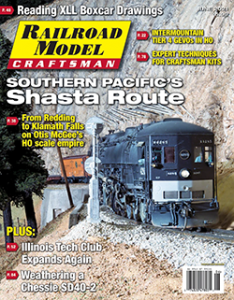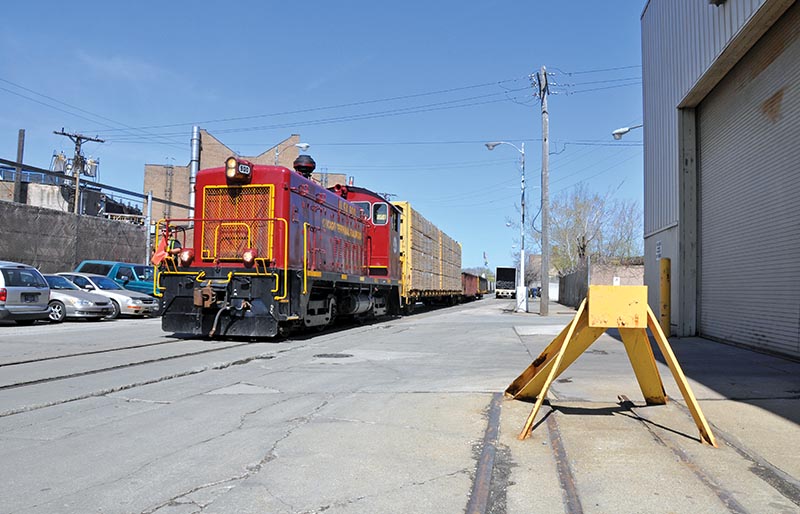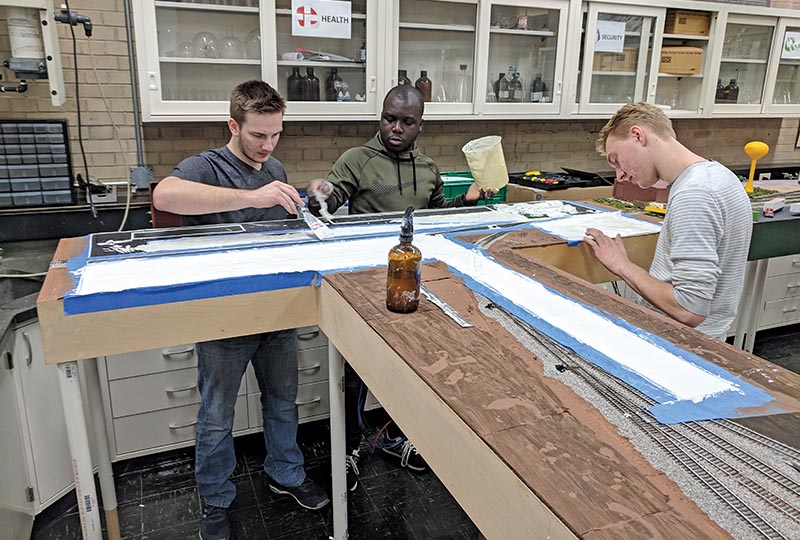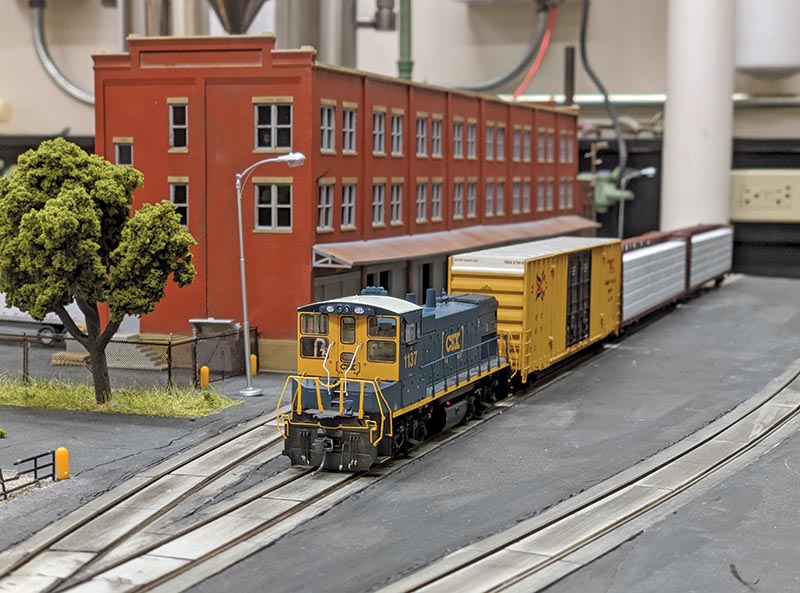 By Daniel Rappoport/photos as noted
By Daniel Rappoport/photos as noted
The original Illinois Tech Model Railroad Club, founded in 1948, built and operated a layout in the attic of the campus’ historic Main Building until 2016. With support from faculty and alumni, the new Illinois Tech Railroad Club was founded in 2018 to build a new model railroad as well as create career opportunities for students interested in the railroad industry.
With the help of the club, students are transformed into railroaders, landing careers with railroads, transit agencies, and engineering firms. As an official student chapter of the American Railway Engineering and Maintenance-of-Way Association, our club hosts weekly industry speaker events, as well as sending students off to conferences and railroad site visits across the country. However, what makes us unique from other university chapters is that we use the design, construction, and operation of a model railroad to practice railroad engineering concepts learned in the classroom.
Our model railroad is built to national Free-mo modular standards to make it portable and flexible in shape to fit any room. Joining the Free-mo community has also given us access to wonderful mentoring opportunities by other, more experienced, model railroaders, and allowed us to participate in and even host large multi-club setups. We also are very grateful to our university for granting us space on campus for a workshop where we build our modules, and a second room where our finished modules are set up in an operational layout.

Chicago Terminal Railroad was the last operator of the old Milwaukee Road track down Kingsbury Street, seen here with loads for Big Bay Lumber and General Iron on April 29, 2011. Scenes like this were the inspiration for ITRC’s HO modules. —Lou Gerard photo
In the May 2019 issue of RMC, we shared one of our first projects, a module with an aggregate transload industry. Now, we are thrilled to present the Kingsbury Branch, a new 28-square-foot module showcasing urban industrial switching scenes set in the city of Chicago.
This project was born from a desire to build a unique terminus for our layout’s existing industrial branch line. The street-running Chicago & Evanston line of our beloved city turned out to be the perfect spot, since it features some iconic industries and trackwork that we would be able to visit in person to study the prototype. Unfortunately, the line was abandoned right as we were finishing construction of our module, but we are still excited to operate a unique piece of Chicago history on our layout.
Scenically, the module is a hybrid interpretation of multiple iconic locations — the Chicago Terminal Railroad’s street-running tracks of Kingsbury Street and Goose Island, as well as its interchange with Union Pacific Railroad’s Low Line around North Avenue Yard. The artistic decision to consolidate these scenes onto one run of track was done intentionally to ensure the module would be immediately recognizable to any Chicagoan, while at the same time not identical enough to catch inevitable inaccuracies like a misplaced bush or street sign. As part of our research of the prototype, our students were invited to do ride-alongs with the Chicago Terminal Railroad before they ceased operations, learning first-hand how trains are switched.

Cork sheeting was used to raise the terrain to the level of the Walthers street inserts, with the streets themselves made from Woodland Scenics Smooth-It. —Daniel Rappoport
Construction
Construction of the module started with track laying on a shell of a Free-mo module donated by a university alumnus. Given that the module is stub-ended, and technically contains no through-track, we were able to skirt some of the Free-mo standards with sharper curves and Atlas no. 4 turnouts, replicating the brutal geometry that makes street-running unique. The sidings of the module are intentionally limited to four-axle power only, just like the real-world prototype, which is an operational constraint our yard’s trainmaster must consider when building locals to serve the module’s industries.
The next step was to install Walthers Street Track Inserts (no. 933-3140), which models the concrete-embedded-roadway trackwork of Kingsbury Street and Goose Island in Chicago. All the terrain around the street track had to be raised up to the level of the Walthers inserts, being careful not to let the roadway run higher than top-of-rail to ensure easy future cleaning of the tracks with abrasive blocks. The base layer was made of cork sheeting, with Woodland Scenics Smooth-It (no. ST1452 ) poured over the top to create the asphalt roadways. Caboose Industries switch throws were recessed in the sidewalks under manholes, and connected to the switches via piano wire buried under the street. In the actual prototype, we learned that train crews would use crowbars to throw the switch mechanisms in the manholes to avoid getting their hands bitten by rats…



